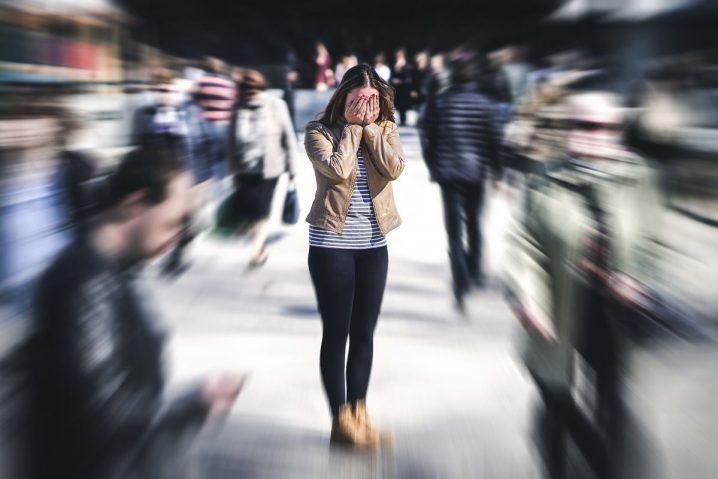Substance-induced anxiety disorder is a form of anxiety disorder whose onset is triggered by certain drugs or pharmaceutical medications. In this case, anxiety is characterized by feelings of nervousness, panic, and restlessness. The use of many different pharmaceutical and illicit drugs correlates with this condition. Severe anxiety is unhealthy for the body, mentally and physically. It needs to be taken seriously by any individual experiencing symptoms, as well as their doctor.
Causes of Substance-Induced Anxiety
The human brain has a delicate balance of neurotransmitters, receptors, and hormones that affect how we think, act and feel. Various factors such as life events, diet, exercise, physical surroundings, and medications can throw this balance off. Every individual is different. As a result, this makes it difficult to know how drastically one may be affected by a new medication or how they will be affected by a medication long term. Medications prescribed to treat one symptom, such as depression, may cause anxiety to present. Additionally, when certain medications are taken over an extended period, they can lead to neurological physiological changes. When a physiological change has taken place while on a medication, and the medication is abruptly stopped, it can lead to brain functioning that is different than before starting the medication.
One example of this is benzodiazepine use. Generally, benzodiazepines increase the production of neurotransmitters called dopamine. When taken over long periods, the brain may compensate for the overproduction of dopamine by reducing the number of dopamine receptors. It could take years following discontinued use of benzodiazepines for the receptors to regenerate and fully recover. As a result, this could mean years of increased anxiety upon detoxing from benzodiazepines.
Benzos are far from the only chemical substances that can induce an anxiety disorder. Here are lists of substances and medications that have been connected with this mental health issue.
Types of substance-induced anxiety disorder
- Alcohol
- Caffeine
- Cannabis
- Hallucinogens
- Inhalants
- Stimulants (i.e., amphetamines, cocaine, prescription stimulants)
List of medications that cause SIAD
- Analgesics
- Anesthetics
- Anticholinergics
- Anticonvulsants
- Antidepressants
- Antihistamines
- Antihypertensive and cardiovascular medications
- Antiparkinsonians
- Antipsychotics
- Corticosteroids
- Insulin
- Lithium carbonate
- Oral contraceptives
- Sympathomimetics or other bronchodilators
- Thyroid preparations
Symptoms
Substance-induced anxiety disorder symptoms may vary from one person to another but usually begin within a few days of starting or stopping the substance. Symptoms to look out for include:
- Constant fear of negative outcomes and general concern regarding “bad things”
- Difficult or strained breathing
- Chest pain and increased heart rate
- Chills and sweats
- Shaking and tremors
- Fear of losing control
- Problems with memory and concentration
- Stomach problems such as diarrhea or nausea
- Difficulty falling or staying sleeping
- Intense dreams and nightmares
Diagnosis
To diagnosis a substance-induced anxiety disorder, a healthcare provider will ask a set of questions to determine what medications and drugs the patient currently takes. Additionally, they will question when use began, the symptoms, and when the symptoms started. They will also review the patient’s medical history and may run several tests. Thus, the patient must be completely transparent and truthful about their substance use and symptoms to obtain an accurate diagnosis and get proper treatment.
Substance-induced anxiety vs. generalized anxiety disorder
Both substance-induced and generalized anxiety disorders have similar symptoms and are mental health disorders in the DSM 5. The main difference is that the latter is correlated directly with starting or stopping using a particular chemical substance. Generally, if the anxiety symptoms were present before initiating substance use, it is not considered substance-induced.
Treatment
Once a medical staff determines a diagnosis, a treatment plan needs to be put in place. Generally, there are various treatment options based on each individual’s unique circumstances and medical history. It is important to discuss the options with a healthcare provider before making any changes to the dosage or discontinuing use. Options range from medication-assisted treatment, behavioral therapy and alternative therapies.
Medication-Assisted Treatment
One option to treat substance-induced anxiety disorders is actually via the use of medications. With close observation of a physician, this could look like a slow tapering off of the current medications or different medications. Additionally, sometimes physicians switch their patients to different medications. The purpose of this is to attempt to find a medication that can help resolve the initial condition being treated without producing anxiety or other symptoms. Other medications may also be used to address withdrawal symptoms while tapering off or detoxing from the medication, causing anxiety.
Behavioral Therapy
Individual therapy is highly beneficial in addressing behavioral issues and mental health disorders. A therapist may help their clients identify and address factors that may have lead to substance use in the first place. They can also help their client develop skills to manage triggers and coping mechanisms.
Alternative Therapies
In addition to medication and therapy, alternative therapies help develop positive practices for mindfulness and improve one’s overall well-being. Yoga, chiropractic care, and acupuncture are all practices that help to treat anxiety, addiction, and numerous other ailments.
Substance-Induced Anxiety Disorder & Addiction
Substance abuse and anxiety both require immediate intervention. If dependence or addiction exists for one or multiple substances and a substance-induced anxiety disorder, a dual diagnosis treatment program can help. This form of treatment addresses mental health conditions and addiction concurrently.
If you or a loved one struggles with a substance-induced anxiety disorder, get support from trusted friends and family. Also, focus on stress management and physical health, review all current medications, and immediately reach a healthcare provider.





